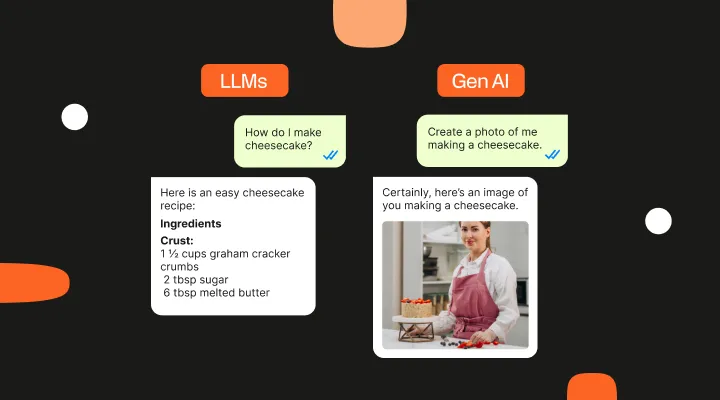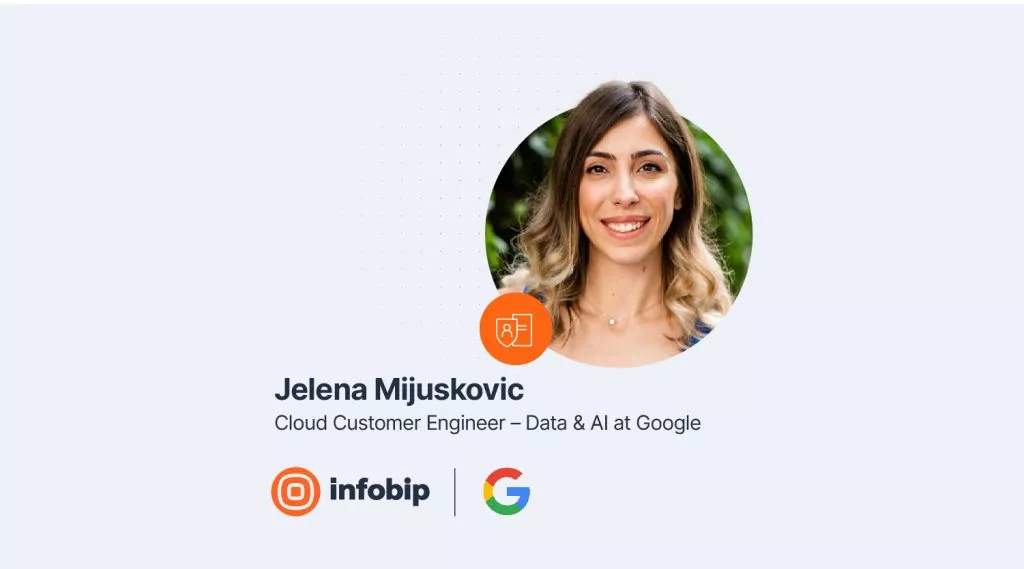What is Vertex AI?
Vertex AI is a Google Cloud service consolidating various AI and machine learning (ML) tools and services into a single ML platform. This streamlines the entire process of creating, deploying, and managing AI solutions.
What are Google Vertex AI features?
Some of Vertex AI features include:
- Data preparation: Data sets and Feature Store for storing and managing ML features.
- Model training: AutoML for image, text, video, and tabular data, as well as custom training options.
- Experiment tracking: Vertex AI Experiments to organize and compare different model iterations.
- Hyperparameter tuning: Vertex Vizier to optimize your model’s configuration for better performance.
- Model deployment: Vertex AI Pipelines to create and orchestrate ML workflows and flexible model serving options.
- Model monitoring: Tools to detect concept drift, data skew, and performance degradation in deployed models.
What are some everyday use cases for Vertex AI?
Data scientists and ML engineers can take advantage of Vertex AI in many ways:
- Machine learning models and artificial intelligence: It seamlessly supports the building and deploying sophisticated models commonly used in ML and AI projects. It can effortlessly manage the massive datasets that training models require, and its refined algorithms excel in tasks like predictive analytics and natural language processing.
- Big data analytics: It is designed to handle the vast amounts of data integral to big data analytics. Its capacity for parallel processing large datasets makes it an excellent choice for real-time analytics and data mining operations.
- Recommendation systems: It is a powerful tool for building recommendation systems in areas like e-commerce and content streaming. It expertly predicts user preferences to recommend tailored products or content by leveraging its data-handling capabilities and advanced machine learning algorithms.
- Image and video recognition: It enables the creation of image and video recognition models deployed in security systems, social media analysis, and similar applications. Its specialized machine learning algorithms make it proficient in image classification and object detection tasks.
- Natural language processing (NLP): NLP applications like chatbots and virtual assistants can be built using Vertex AI. Its advanced algorithms are adept at sentiment analysis, translation, and other language-based tasks.
What are some common Vertex AI tools?
Common Vertex AI tools are:
- Unified workflow: It centralizes the entire ML process within an intuitive user interface and API. This streamlines development, from data preparation to model deployment.
- Open-source integration: Seamless integration with popular frameworks like TensorFlow and PyTorch, plus support for custom containers, ensuring flexibility for developers.
- Pre-trained APIs: It provides readily available APIs for common AI tasks like video analysis, image recognition, translation, and natural language processing. These accelerate development time.
- AutoML: AutoML empowers users to create custom models requiring minimal ML expertise. This significantly simplifies and speeds up model development.
- Data and AI integration: Native integration with Google Cloud services like BigQuery, Dataproc, and Dataflow. This smooths data flow throughout the ML pipeline, from storage and processing to model execution.
Benefits of Vertex AI
Vertex AI brings a lot of benefits for your business, here are a few:
- Unified platform: Vertex AI consolidates data preparation, model training, deployment, and monitoring into a single AI platform. This dramatically simplifies the machine learning workflow and reduces overall management overhead.
- Open-source support: Vertex AI’s integration with open-source models and frameworks empowers developers to work with familiar tools, boosting productivity and flexibility.
- Simplicity and scalability: It prioritizes usability, allowing users to build custom models or tailor existing solutions without excessive complexity. It scales effortlessly to accommodate growing needs.
- Efficient infrastructure: It leverages Google Cloud’s optimized infrastructure, providing cost-effective access to powerful computing resources and enabling the management of large data sets.
- Seamless data-to-AI integration: Vertex AI’s fully managed nature and native integration with other Google Cloud AI services streamline data flow and simplify the deployment of AI solutions into existing applications.
Limitations and challenges
- Data privacy and security: As with any AI application, ensuring data privacy and security requires careful attention. Adhering to best practices and leveraging Vertex AI’s built-in tools like IAM (Identity and Access Management) policies is crucial for responsible use.
- Model bias: It’s essential to be aware of potential biases in training data that can propagate into your models. Google provides fairness indicators within Vertex AI to help identify and mitigate bias during development.
- Cost management: While Vertex AI offers scalable infrastructure, it’s vital to monitor costs. Features like auto-scaling and choosing appropriate computing resources can help optimize your spending.
Google is actively working to address these challenges.
Additionally, following AI development best practices and proactively utilizing the platform’s privacy and cost management features are excellent ways to mitigate potential risks.
Vertex AI and RCS
A retailer could implement an AI-powered RCS chatbot. This chatbot can:
- Answer frequently asked questions about products or orders.
- Use NLU to understand customer needs and offer personalized product recommendations.
- Guide customers through the purchasing process.
- Analyze images sent by customers (e.g., a damaged product) to speed up resolution processes.











